

— Blogs —
—Products—
 Consumer hotline +8618073152920
Consumer hotline +8618073152920 WhatsApp:+8615367865107
Address:Room 102, District D, Houhu Industrial Park, Yuelu District, Changsha City, Hunan Province, China
Product knowledge
Time:2024-11-10 17:12:34 Popularity:1090
In modern agriculture, irrigation system is an important tool to realize the efficient use of water resources and the healthy growth of crops. Irrigation sensors play a vital role as the “eyes” and “brain” of the irrigation system. In this article, we will introduce the types of irrigation sensors, their working principle and their application value in agricultural production.
Irrigation system refers to the use of modern electronic information technology, automated management and control of farmland to achieve the goal of precision irrigation and water-saving irrigation. It usually includes the following components:
- Field sensors: used to monitor environmental parameters such as soil moisture, temperature and rainfall.
- Controller: automatically adjusts the irrigation schedule according to the sensor data.
- Actuators: such as water pumps, solenoid valves, etc., used to perform irrigation operations.
- Pipe network: used to transport irrigation water.
 |  |  | 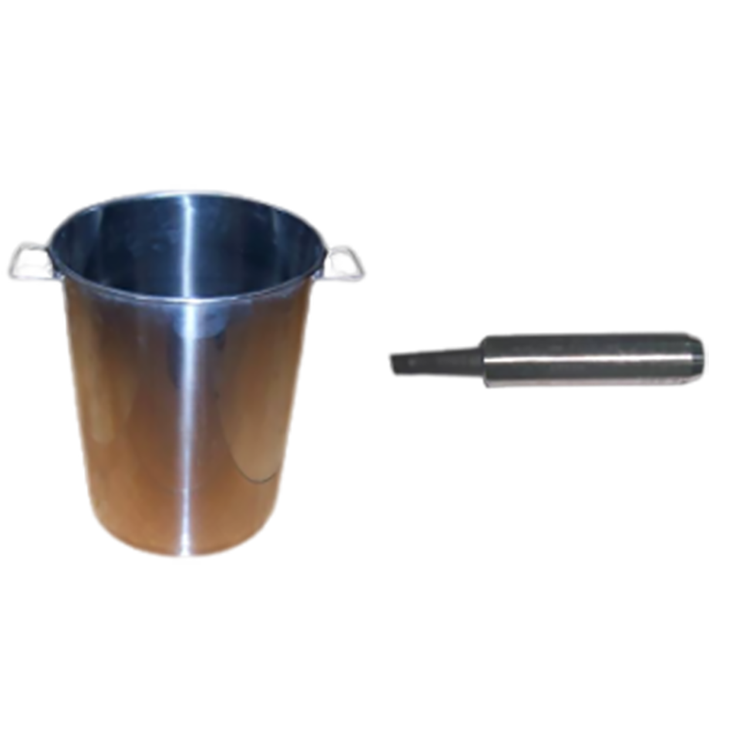 | 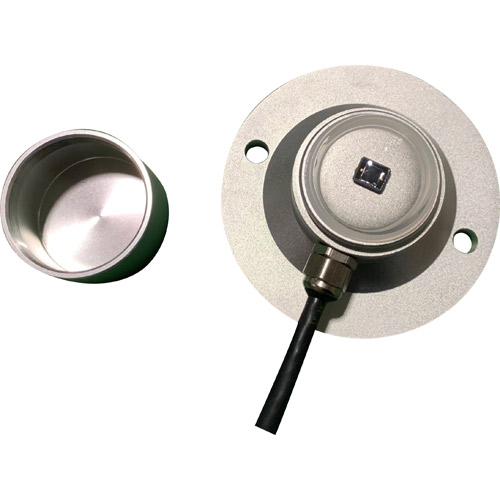 |
| Anemometer Wind Speed sensor | Wind direction sensor | Tipping bucket rain gauge sensor | Evaporation sensor | Sunshine Duration Sensor |
 |  |  |  |  |
| Atmospheric Temperature Humidity air pressure Sensor | ultrasonic wind speed and direction sensor | 5 in1 Ultrasonic Weather Station Sensor | 6 in1 Ultrasonic Weather Station Sensor | 7 in1 Ultrasonic Weather Station Sensor |
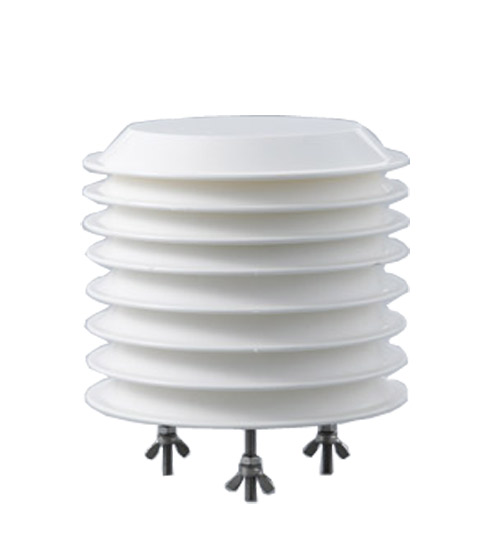 | 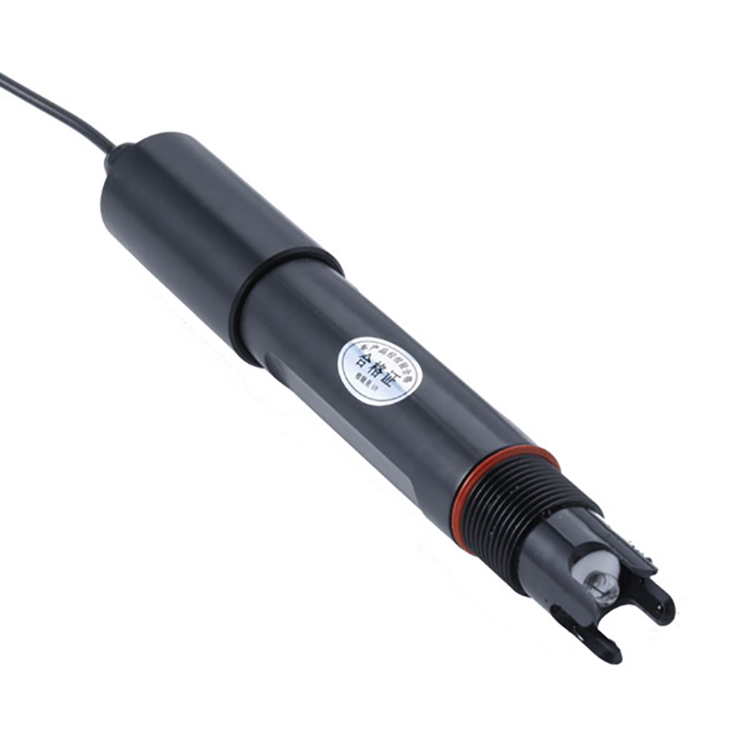 | 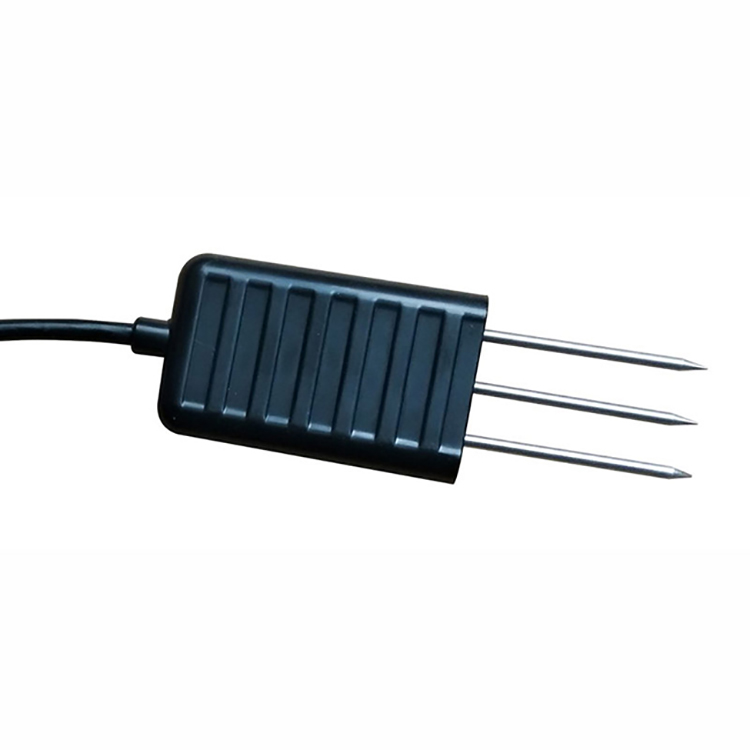 |  |  |
| Carbon dioxide sensor(CO2 sensor) | Soil pH sensor | 3-in-1 Soil Temperature Humidity EC Sensor | illumination sensor | Soil Moisture Temperature sensor |
Irrigation sensors are the key equipment to achieve precision irrigation, they can sense and measure a variety of environmental parameters of the farmland, and convert this information into electrical signals or other measurable forms for the irrigation system for analysis and processing. Common irrigation sensors include:
- Purpose: Measure the moisture content in the soil.
- Types: capacitive, resistive, time-domain reflectance (TDR), frequency-domain reflectance (FDR), etc.
- Principle:
- Capacitive: Measurement of moisture content by utilizing the relationship between soil dielectric constant and moisture content.
- Resistive: Reflects moisture content based on changes in soil resistance.
- Time Domain Reflectance (TDR): Estimates the moisture content by measuring the propagation speed of electromagnetic waves in the soil.
- Frequency domain reflection (FDR): determines the dielectric constant by analyzing the frequency response of electromagnetic waves.
- Purpose: To measure the temperature of the soil to understand the growing conditions and transpiration of crops.
- Principle: Measurement of soil temperature by using temperature sensitive elements such as thermistors or thermocouples.
- Purpose: To measure rainfall in order to adjust the irrigation schedule in time to avoid over irrigation. Principle: To measure rainfall by means of a rain barrel or a thermocouple.
- Principle: Measurement of rainfall by means of a rain barrel or tipping bucket sensor.
- Purpose: To measure light intensity in order to understand the photosynthesis and water requirements of crops. Principle: Measurement of light intensity by means of a photosensitive element (e.g., a sensor).
- Principle: Measurement of light intensity by means of a photosensitive element (e.g. photodiode).
- Purpose: To monitor wind speed and direction in agricultural areas to inform irrigation decisions. Principle: Measurement of wind speed and direction by means of an anemometer and a photodiode.
- Principle: Measurement of wind speed and direction by means of an anemometer and wind vane.
- Purpose: To monitor soil salinity and help adjust the EC of irrigation water to avoid crop damage caused by salt accumulation. Principle: Measurement of soil salinity by means of an anemometer and a wind gauge.
- Principle: Measurement of the electrical conductivity of the soil solution to reflect the salt content.
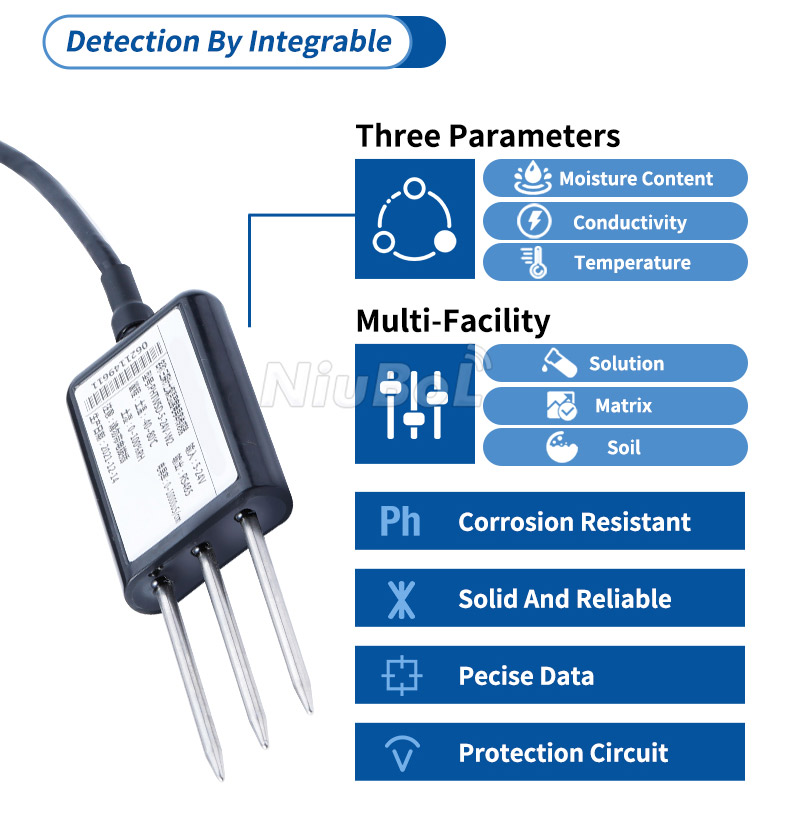
Irrigation sensors work on different physical and chemical principles by sensing and measuring changes in the environmental parameters of the farmland and converting them into electrical signals or other measurable forms. Following are the working principles of several common sensors:
- Capacitive: utilizes the relationship between soil dielectric constant and moisture content to measure moisture. As the moisture content of the soil increases, the dielectric constant increases and so does the capacitance value.
- Resistive: Reflects moisture content based on changes in soil electrical resistance. As the moisture content in the soil increases, the resistance value decreases.
- Time Domain Reflectance (TDR): moisture content is inferred by measuring the propagation speed of electromagnetic waves through the soil. Electromagnetic waves travel slower in moist soil.
- Frequency Domain Reflectance (FDR): The dielectric constant is determined by analyzing the frequency response of electromagnetic waves. The dielectric constant is proportional to the moisture content.
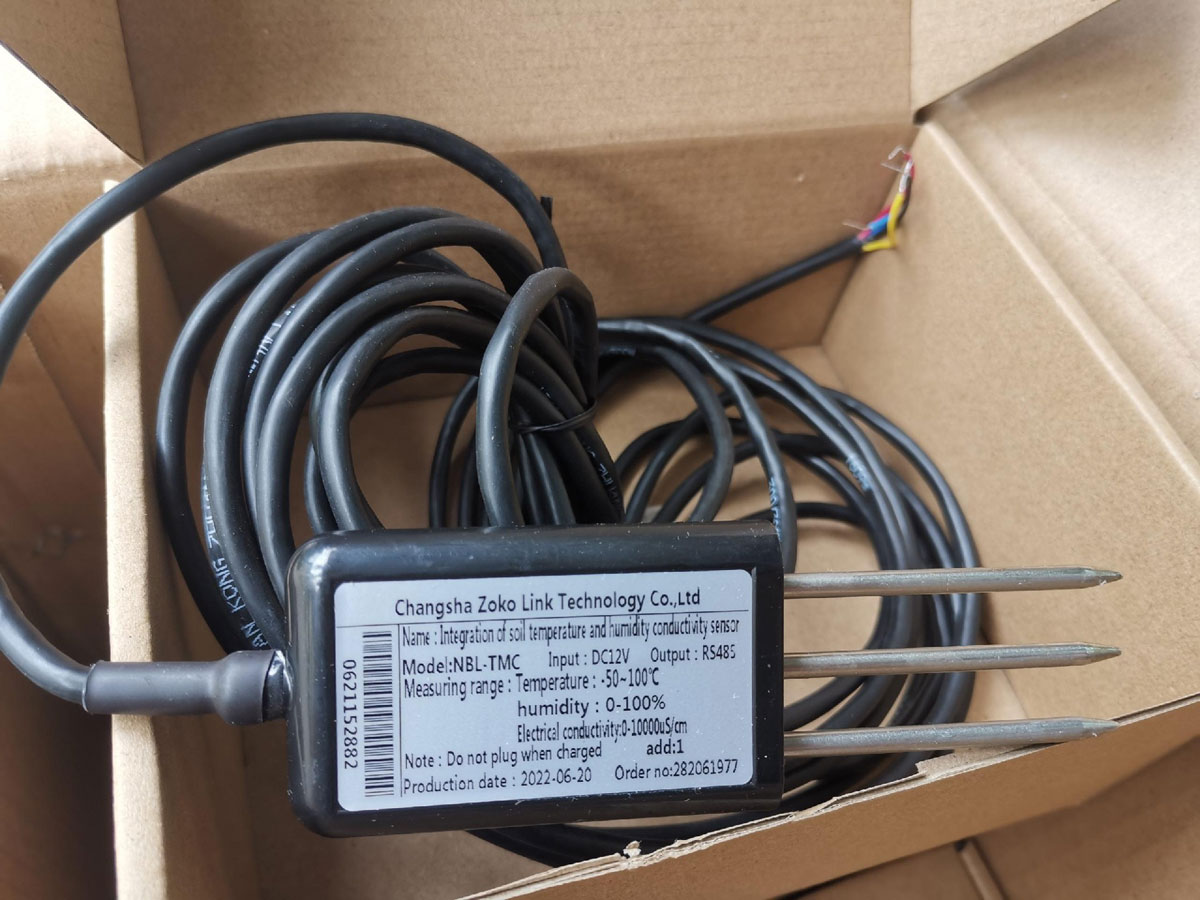
- Thermistor: Measures soil temperature by utilizing the property of a thermistor's resistance to change with temperature.
- Thermocouple: Uses the electric potential generated by the temperature difference between the contact points of two different metals to measure temperature.
- Rain barrel: calculates rainfall by collecting rainwater and measuring its volume.
- Bucket Sensor: Calculates the amount of rainfall by the number of times the bucket is turned over.
- Photodiode: Measures light intensity by converting light energy into an electrical signal through the photoelectric effect.
- Anemometer: Measures wind speed by rotating blades or ultrasonic waves.
- Anemometer: Measures wind direction by the position of the indicator.
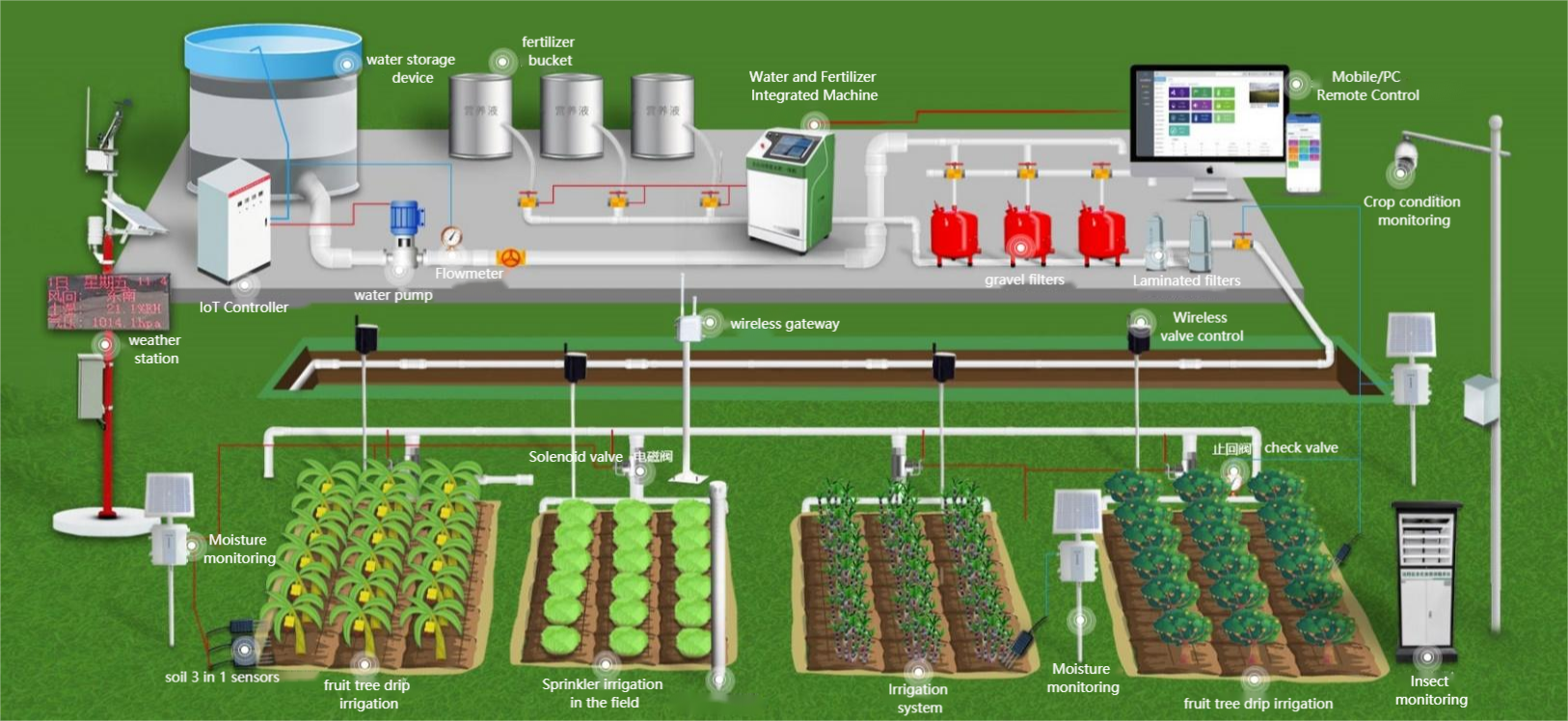
Irrigation sensors play an integral role in agricultural production. They are able to monitor various environmental parameters of farmland in real time, providing accurate data to support the irrigation system. By analyzing and processing these data, the irrigation system can automatically adjust the irrigation schedule to achieve the goals of precision irrigation and water-saving irrigation. This not only improves the efficiency of water utilization, but also promotes healthy crop growth and increased yields. In addition, irrigation sensors can help farmers better understand the actual situation of farmland, develop more scientific agricultural management measures, and improve the automation and intelligence of agricultural production.
- Real-time monitoring: the sensor can monitor soil moisture, temperature and other key parameters in real time, providing accurate data support for the irrigation system.
- Automatic adjustment: by analyzing and processing these data, the irrigation system can automatically adjust the irrigation schedule to achieve the goal of precise irrigation and water-saving irrigation.
- Dynamic adjustment: The sensor can also be combined with weather stations, cloud platforms and other systems to dynamically adjust the irrigation strategy according to real-time weather conditions, further improving the water-saving effect.
- Scientific decision-making: The sensor can monitor the growth environment and needs of crops in real time, providing farmers with a scientific basis for irrigation decision-making.
- Precision irrigation: Through precision irrigation, the water demand of crops can be met, promoting the healthy growth and development of crops.
- Comprehensive management: The sensor can also monitor soil temperature, light intensity and other parameters to provide farmers with comprehensive crop growth information to help develop more reasonable agricultural management measures, such as fertilization, pest control.
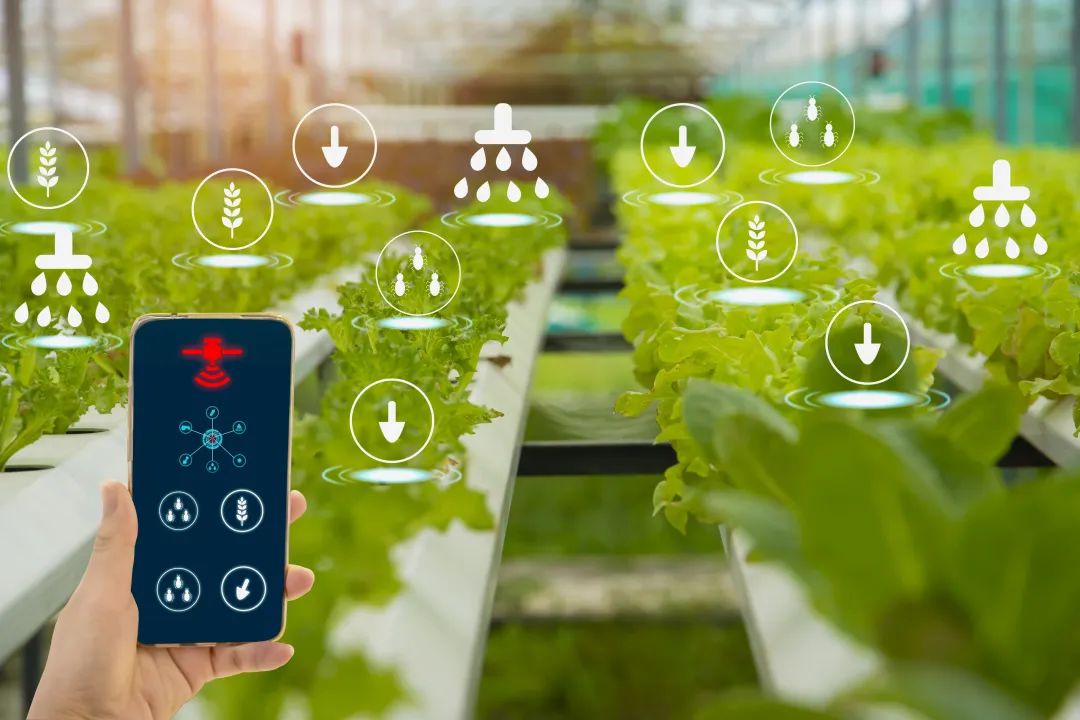
- Early warning: Sensors can monitor the operation status of irrigation equipment in real time, and discover potential leakage, blockage and other problems in a timely manner.
- Timely maintenance: Through early warning and timely maintenance, unexpected downtime and production loss due to equipment failure can be avoided.
- Reduce inputs: Sensors can also help farmers grasp irrigation needs more accurately and reduce unnecessary irrigation equipment and labor inputs, thus reducing operating costs.
- Precise operation: irrigation sensors, as an important part of smart agriculture, are applied to promote the modernization and intelligent process of agricultural production.
- Intelligent management: Sensors can be combined with modern agricultural equipment such as drones and smart farm machinery to realize precise operation and intelligent management of farmland.
- Data support: through real-time monitoring and analysis of farmland environmental parameters, sensors can provide farmers with more accurate and scientific agricultural management recommendations.
- Resource saving: Through precision irrigation and water saving and emission reduction, it can reduce the waste and pollution of water resources and protect the ecological environment.
- Pollution reduction: The sensors can also monitor soil nutrients and crop growth conditions, provide farmers with scientific advice on fertilizer application, reduce the use of chemical fertilizers and pesticides, and reduce the risk of agricultural surface pollution.
- Sustainable development: these measures help protect the agro-ecological environment and realize the sustainable development of agricultural production.
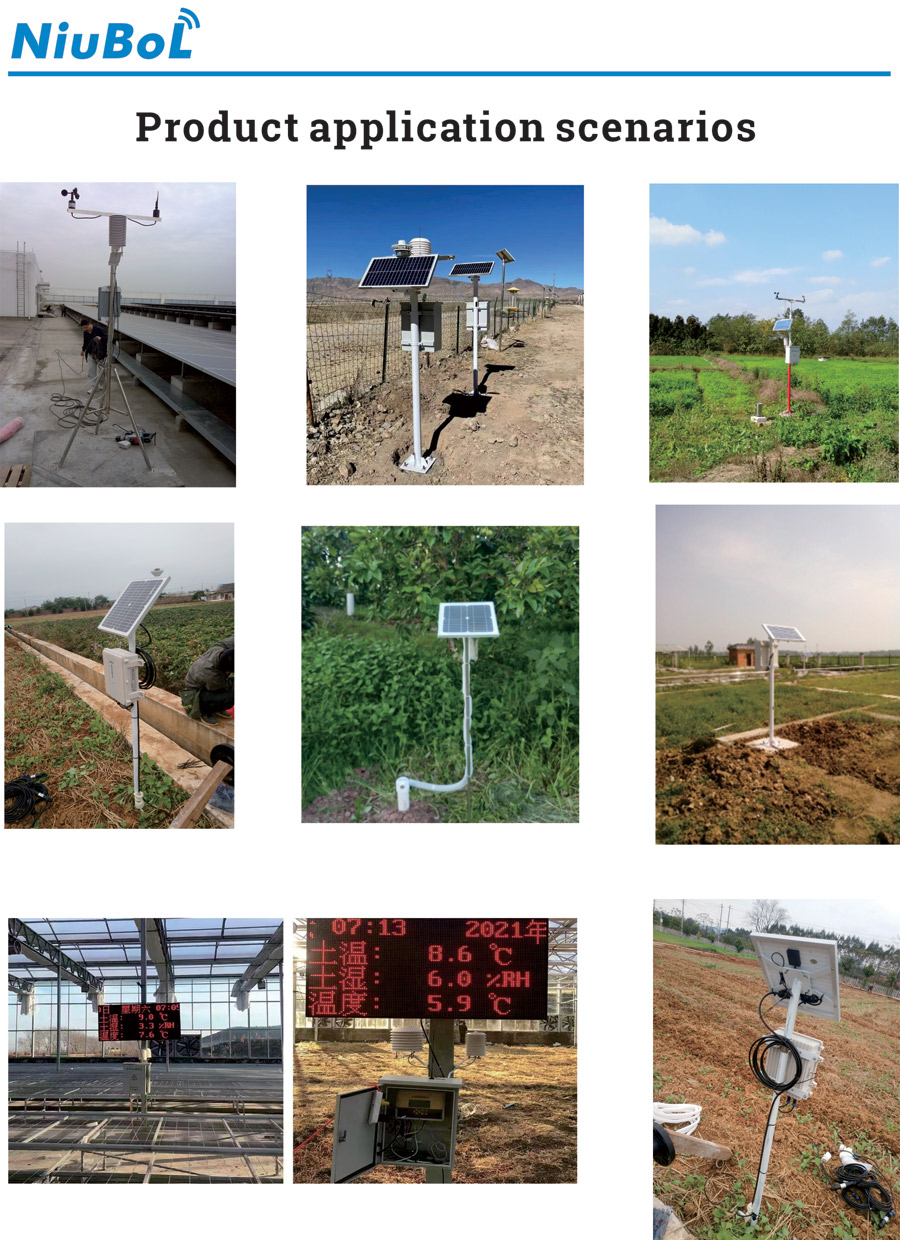
Summarize
Irrigation sensors, as a core component of the irrigation system, provide strong support for precision irrigation and water-saving irrigation through real-time monitoring of various environmental parameters in farmland. They not only improve the utilization efficiency of water resources, but also promote the healthy growth and yield of crops. With the continuous development of agricultural technology, irrigation sensors will play a more important role in future agricultural production. Therefore, we should strengthen the research and application of irrigation sensors to promote the modernization and intelligentization of agricultural production.
Related recommendations
Sensors & Weather Stations Catalog
Agriculture Sensors and Weather Stations Catalog-NiuBoL.pdf
Weather Stations Catalog-NiuBoL.pdf
Related products
 Combined air temperature and relative humidity sensor
Combined air temperature and relative humidity sensor Soil Moisture Temperature sensor for irrigation
Soil Moisture Temperature sensor for irrigation Soil pH sensor RS485 soil Testing instrument soil ph meter for agriculture
Soil pH sensor RS485 soil Testing instrument soil ph meter for agriculture Wind Speed sensor Output Modbus/RS485/Analog/0-5V/4-20mA
Wind Speed sensor Output Modbus/RS485/Analog/0-5V/4-20mA Tipping bucket rain gauge for weather monitoring auto rainfall sensor RS485/Outdoor/stainless steel
Tipping bucket rain gauge for weather monitoring auto rainfall sensor RS485/Outdoor/stainless steel Pyranometer Solar Radiation Sensor 4-20mA/RS485
Pyranometer Solar Radiation Sensor 4-20mA/RS485
Screenshot, WhatsApp to identify the QR code
WhatsApp number:+8615367865107
(Click on WhatsApp to copy and add friends)
